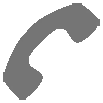
If you live in hurricane-prone areas, it’s important to have a plan in place every year. However, with more than 8 million estimated people using CPAP each night, storm preparedness is even more critically important for those relying on CPAP machines to treat sleep apnea.
CPAP machines need electricity to work, so if there is a power outage, people who depend on them for respiratory support may face sleepless nights and put themselves at risk for worsening health problems.
So if you depend on your CPAP device, consider this your ultimate hurricane preparedness action plan. We’ll guide you through the potential risks to be aware of and provide you with a checklist to mitigate those risks and ensure you have the right supplies before the storm happens.
Risks of Disrupted CPAP Therapy During Hurricanes
You may wonder, “What’s the harm of not sleeping with my CPAP for a few nights?”
The truth is that experts highly encourage those with sleep apnea to continue therapy if at all possible, even in the event of a power outage. Simply put, it is crucial to plan ahead to avoid any disruptions to your therapy.
CPAP therapy is meant to be a long-term solution to help you manage the symptoms of sleep apnea. It is not, however, a cure for sleep apnea, which means that if you abruptly stop sleeping with your CPAP machine, you will very quickly begin to see the adverse effects of that change.
A 2017 study from Johns Hopkins examined the effect of suddenly halting therapy in people with Obstructive Sleep Apnea (OSA). Their results showed that changes in the body begin almost immediately after falling asleep without the CPAP. Scientists noted a clear increase in certain metabolites in the blood, including free fatty acids, glucose, and cortisone (the stress hormone) levels. They also found that after just three days without treatment, participants showed signs of additional stress to the cardiovascular system, including physical changes to the arteries.
Some of the issues that you will most likely begin to notice after just one night without your CPAP machine include the following:
- Snoring
- Fatigue
- Waking Up Choking/Gasping for Air
- Increased Frequency of Headaches
- High Blood Pressure
- Increased Heart Rate
- Changes in Mood/Difficulty Regulating Mood
Hurricane Supply Checklist for CPAP Maintenance
If you rely on a CPAP machine, being prepared for power outages is crucial to your health and well-being. According to a report by the University of Miami, on the effects of Hurricane Irma (a category 3 storm), 80% of people lost access to their CPAP machines for an average of four days.
To avoid treatment disruptions during or after a hurricane, it is important to stay stocked with certain essentials. Remember, you should have enough supplies to get you through at least three days of power disruptions. However, most experts suggest planning for an entire week, if possible.
Here are the top things to keep on hand to maintain your CPAP machine during a power outage!
1. Backup Battery
Most backup batteries will get you through a night or two without access to power. However, this may not be enough following particularly bad storms. If you live in an area that is regularly impacted by bad weather, we suggest looking for a backup battery with a large capacity – preferably something above 250 Wh (watt-hours). A good backup battery will automatically take over when the power goes out so your therapy is not interrupted.
It’s also important to remember that your CPAP’s pressure settings will impact your battery life. Higher pressure settings will cause the battery to die sooner than advertised. If you have a travel-sized CPAP machine such as the ResMed AirMini, Transcend Micro, or HDM Z2, you’ll get much longer battery run times since these machines use much less power than full-sized CPAP machines like the AirSense 10 or AirSense 11.
The largest capacity backup battery in our catalog is the Zopec Explore Oxygen, with up to 64 hours of battery life for a CPAP machine on lower pressure settings (4-10 cmH2O) operated without humidification or heated tubing. Every battery in the Zopec Explore series (EXCEPT the Zopec Voyage) functions as an automatic backup battery and can be linked in a series with an unlimited number of Zopec Explore batteries, even if they have different capacities. They also feature at least one AC power outlet capable of powering almost anything you can plug into it and one or two USB outlets for keeping your cell phone, tablet, or laptop computers charged.
For more information on choosing a CPAP battery, check out our article on the best CPAP batteries and backup power tips.
2. Portable Power Supply
While CPAP backup batteries work well for a night or two without power, a portable generator may be worth investing in if you expect to be without power for multiple days. They come in different sizes and power capacities, but most will allow you to keep power running to your whole house, rather than just your CPAP and a couple of personal devices. Alternatively, you can choose to run heavy-duty extension cords to a select number of important appliances and devices to conserve the power you have available.
⚠️ Make sure your portable power supply is fully charged and/or fueled before the storm. If you choose to go with a generator, please keep in mind that gas-powered generators cannot be used inside your home due to the risk of carbon monoxide buildup. You can, however, place your generator just outside your door or window and run cords from the engine into your home. For more information, check out FEMA’s article on generator safety.
Remember, even if you live far inland, you are still prone to losing power from heavy winds and rain!
3. Distilled Water
If possible, we suggest storing distilled water—and even drinking water as well as washing water—well ahead of time. It’s important to only use distilled water in your CPAP humidifier because of the minerals present in other types of water, such as tap, filtered, and even spring water. If you’re expecting a large storm, you should fill a spare bathtub with water for flushing toilets, washing dishes, and other needs that may arise. You should also have bottled drinking water on hand so you don’t have to resort to drinking bathtub or distilled water reserved for your CPAP.
Related: Browse our distilled water and filtering systems for CPAP equipment.
Tap water is acceptable for CPAP in a pinch, but pay close attention to any safety announcements about your local water supply, such as boil water notices from your local county officials.
Hurricanes can contaminate your water supply, particularly if they bring flooding or tidal surges. Additionally, your local treatment plant may lose power, leading to hours or even days-long loss of access to clean water. If your water is not cleared for drinking, it should also not be used for the CPAP’s humidifier or for cleaning your CPAP machine. If it comes down to choosing between continuing therapy without the humidifier or not sleeping with your machine at all, remember that it’s always better to sleep with your CPAP whenever possible.
4. Waterless Cleaning Supplies
It is essential to keep up with cleaning your CPAP equipment, despite the storm. Bacteria can begin growing within hours, while mold can arise after just one day. Mild soap and water are often enough for day-to-day upkeep. However, you do not want to waste precious drinking water cleaning your CPAP. In the event that you lose access to clean water, we highly suggest stocking up with some CPAP cleaning supplies that do not require water. Remember to avoid anything with harsh chemicals, including household cleaners. Be sure to allow time for your equipment to fully dry before bed.
Here are a few options if you don’t have access to water:
- Baby Wipes
- Vinegar
- CPAP Cleaning Wipes
5. Extension Cord
Having an extension cord on hand can be helpful in almost all storm preparedness situations. If an evacuation order is issued, this gives you some flexibility when it comes to sleeping with a CPAP when you have to use the nearest power source. If you have not been evacuated, officials encourage most people to shelter in an interior room not surrounded by windows or exterior doors. For many people, this means that they may have to spend a night away from their bedroom. An extension cord allows you to sleep in a safe spot while still having access to your CPAP.
6. Backup Supplies
As you probably know, CPAP machines require additional parts to function, such as tubing, filters, cushions, masks, and more. Many of these CPAP components need to be changed regularly. Of course, the replacement schedule for each item depends on the specific product and manufacturer. Some filters must be replaced every couple of weeks, while others can last up to six months. If you are scheduled to replace any of your CPAP equipment during hurricane season, we encourage you to stock up on essential CPAP supplies ahead of time, as these storms can sometimes impact delivery by days or even weeks.
Creating a CPAP-Friendly Hurricane Preparedness Action Plan
Planning for a hurricane can be a bit overwhelming when you have the added stressor of needing respiratory support. So it’s best to come up with a step-by-step plan ahead of time.
Here are some things to keep in mind:
Before the Hurricane
- Refill and pick up any must-have prescriptions.
- Call your doctor for guidance on maintaining your treatment plans and what to do in a medical emergency.
- If you require oxygen support, get extra tanks.
- Have one to two weeks of non-perishable foods that won’t need electricity to prepare.
- Make a plan for potential evacuation and know your evacuation routes ahead of time if you live in flood-prone areas.
- Similarly, make a plan to relocate your equipment and essential supplies to a central, windowless, safer part of your home if the storm gets worse or breaks windows.
- Call your utility company to inform them that you have a CPAP machine. While they may not guarantee that your power will stay on, they may be able to add you to a priority list for repairs after the storm.
- Make sure your CPAP is plugged into a surge protector.
- Pack a go-bag with essentials to last a few days in case you need to leave suddenly.
During the Hurricane
- Go to the place you have agreed to shelter in.
- Check-in with loved ones at agreed-upon times.
- Keep your CPAP in a go-bag when not sleeping with it.
- Listen to your local radio or TV for emergency announcements.
- Always run your generator (if you have one) outside your home to avoid carbon monoxide poisoning.
- Maintain a regular cleaning schedule and upkeep of your CPAP machine, including changing replacement parts on time.
- Keep in mind that if you lose access to safe water, you can still sleep with your CPAP machine without humidification.
After the Hurricane
- Stay indoors until it’s safe to go outside.
- If you must venture out for an emergency, be mindful and always avoid downed power lines.
- Be aware that you can lose electricity even after the storm passes.
- Check for any boil water alerts from your local authorities.
- Keep in mind that after-storm cleanup may aggravate existing breathing issues.
- Seek care from your doctor if you develop a cough or show other signs of a lung infection.
- Restock your hurricane supplies as soon as possible.
- If your CPAP has been damaged, contact your doctor, insurance company, and/or manufacturer.
Final Thoughts
Hurricane season can be especially worrisome if you are someone who relies on respiratory support to treat your sleep apnea. But it doesn’t have to be! With the right tools and preparation, you can be ready for any storm.
If you sleep with a CPAP machine and live in an area impacted by hurricane season, it’s essential to start planning now! If untreated, sleep apnea can impact you almost immediately, so it’s essential to follow this guide to ensure your therapy is minimally impacted.
Prepare for being without electricity or clean water for at least a week. Gather necessary items, including backup power and cleaning supplies, to ensure you and your family are ready way before the storm even approaches.




